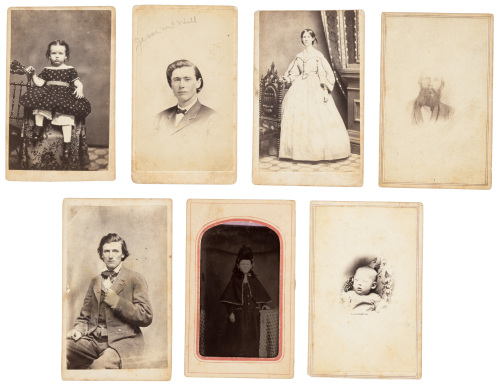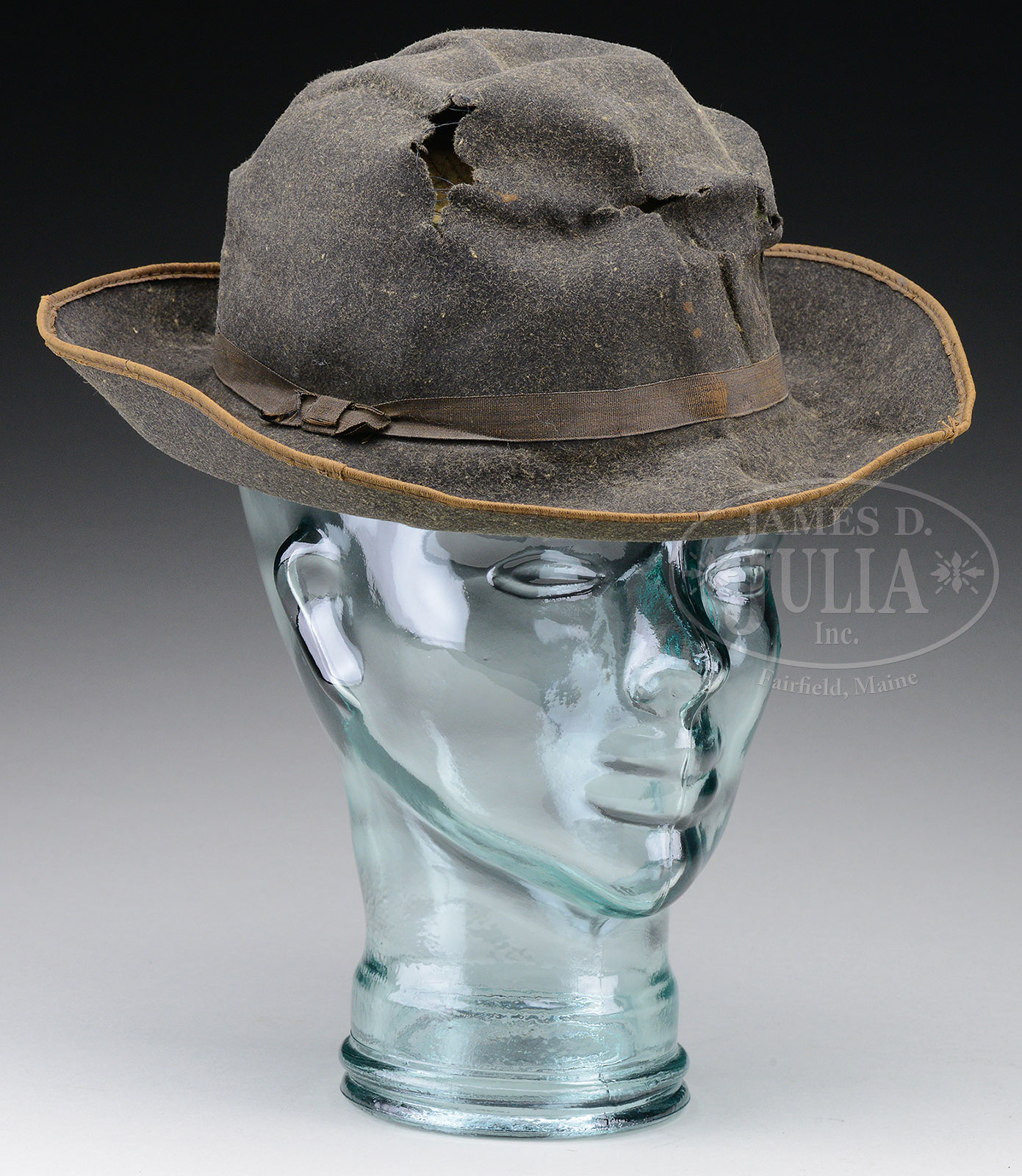CIVIL WAR]. CUNNINGHAM, JOHN, private, Union Army . Illustrated autograph letter signed, to an unidentified correspondent, GIVING AN ACCOUNT OF THE BATTLE BETWEEN THE MONITOR AND MERRIMAC, Camp Butler, Newport News, Virginia, 10 March 1862. 4to, 19 closely written pages, page 1 with hand-drawn map of Hampton Roads, [ With :] Pencil drawing by Cunningham of the two ironclads, with captions in ink, 100 x 126 mm. (3.15/16 x 4.15/16 in.), the first few pages of the letter soiled and with stains, not affecting legibility. A DRAMATIC EYEWITNESS ACCOUNT OF THE BATTLE BETWEEN THE MONITOR AND THE MERRIMAC Cunningham, a Boston-born rifleman of the 29th Massachusetts Infantry, was stationed with a battery overlooking Hampton Roads on both days in which the epic contest between the first ironclads--the rebel Merrimac and Union Monitor , designed by John Ericsson--took place. His letter offers a carefully observed account of all phases of this celebrated naval battle. On March 8, on its first sortie, the Merrimac wrought havoc among the Union warships, destroying two vessels, driving another aground, and threatening to break the Union blockade. The next morning, the Monitor arrived to oppose the rebel ironclad. In his long account (only small portions quoted here), Cunningham explains: "I had taken a spy glass with me...we noticed a large number of small steamers moving back & forth... something unusual was astir...we could distinguish from all the rest a large steam floating battery...the Merrimac...she...took to the channel & went strait around the point...close to the [Union warship] Congress...the Congress poured a whole broadside into her but they glanced off from her like so many peas. She then gave the Congress a broadside...the Merrimac then went strait for the [Union warship] Cumberland...received another broadside...She bored a hole in the Cumberland with sort of a screw at her bow [a ram]...She put one shell through the stern & it raked the gun deck clear to the bow making a terrible slaughter & strewing the deck with legs, arms, blood + brains of men, + then kept on pouring shell...the sailors were manning the guns even while she was sinking...the pivot gun was fired even when the muzzle of her was level with the water...when the Cumberland's officer Lt. Morris was asked to surrender the reply was never as long as there was man aboard to man gun & she went down with colors flying...when the men were getting off in the boats the Merrimac stood off & poured grape & canister amonst them...all the artillery the Post could afford...had no effect upon her...she went back to the Congress & poured shell into her,...the Congress then lowered her colors...one of the rebels went on the Congress & took the American flag & wrapt it around him to carry it off when he was picked off by the Indiana sharpshooters." The next morning, Cunningham recounts: "we could di[s]cern a curious looking object...it put me in mind...of a raft with a sugar box on one end and cord of wood in the middle...the Monitor...then struck out for the Merrimac who had fired a shot at [the Union warship] Minisota [ sic ] a half hour before that. She kept her course steady for Merrimac...Merrimac waited until she nearly touched her and then she gave her a broadside, but it had as much effect on her as the guns of the Congress and Cumberland upon the Merrimac the day before...after a few more exchanges she made tracks for Sewell's point & routed out the Merrimac again...this continued about 3/4 of an hour the Monitor all the while do[d]geing around the Merrimac...about 11 oclock AM the Merrimac began to slack up firing and beat a retreat. The success of the Monitor caused cheers to be given on board the Minisota...it is supposed that the reason why the Monitor did not follow her up was that the Com[m]ander Capt [John] Warden [Worden] had got his eye injured...you can easily see what we all have to thank Mr Erickson [Ericsson] for... if this man had not had the forethou
CIVIL WAR]. CUNNINGHAM, JOHN, private, Union Army . Illustrated autograph letter signed, to an unidentified correspondent, GIVING AN ACCOUNT OF THE BATTLE BETWEEN THE MONITOR AND MERRIMAC, Camp Butler, Newport News, Virginia, 10 March 1862. 4to, 19 closely written pages, page 1 with hand-drawn map of Hampton Roads, [ With :] Pencil drawing by Cunningham of the two ironclads, with captions in ink, 100 x 126 mm. (3.15/16 x 4.15/16 in.), the first few pages of the letter soiled and with stains, not affecting legibility. A DRAMATIC EYEWITNESS ACCOUNT OF THE BATTLE BETWEEN THE MONITOR AND THE MERRIMAC Cunningham, a Boston-born rifleman of the 29th Massachusetts Infantry, was stationed with a battery overlooking Hampton Roads on both days in which the epic contest between the first ironclads--the rebel Merrimac and Union Monitor , designed by John Ericsson--took place. His letter offers a carefully observed account of all phases of this celebrated naval battle. On March 8, on its first sortie, the Merrimac wrought havoc among the Union warships, destroying two vessels, driving another aground, and threatening to break the Union blockade. The next morning, the Monitor arrived to oppose the rebel ironclad. In his long account (only small portions quoted here), Cunningham explains: "I had taken a spy glass with me...we noticed a large number of small steamers moving back & forth... something unusual was astir...we could distinguish from all the rest a large steam floating battery...the Merrimac...she...took to the channel & went strait around the point...close to the [Union warship] Congress...the Congress poured a whole broadside into her but they glanced off from her like so many peas. She then gave the Congress a broadside...the Merrimac then went strait for the [Union warship] Cumberland...received another broadside...She bored a hole in the Cumberland with sort of a screw at her bow [a ram]...She put one shell through the stern & it raked the gun deck clear to the bow making a terrible slaughter & strewing the deck with legs, arms, blood + brains of men, + then kept on pouring shell...the sailors were manning the guns even while she was sinking...the pivot gun was fired even when the muzzle of her was level with the water...when the Cumberland's officer Lt. Morris was asked to surrender the reply was never as long as there was man aboard to man gun & she went down with colors flying...when the men were getting off in the boats the Merrimac stood off & poured grape & canister amonst them...all the artillery the Post could afford...had no effect upon her...she went back to the Congress & poured shell into her,...the Congress then lowered her colors...one of the rebels went on the Congress & took the American flag & wrapt it around him to carry it off when he was picked off by the Indiana sharpshooters." The next morning, Cunningham recounts: "we could di[s]cern a curious looking object...it put me in mind...of a raft with a sugar box on one end and cord of wood in the middle...the Monitor...then struck out for the Merrimac who had fired a shot at [the Union warship] Minisota [ sic ] a half hour before that. She kept her course steady for Merrimac...Merrimac waited until she nearly touched her and then she gave her a broadside, but it had as much effect on her as the guns of the Congress and Cumberland upon the Merrimac the day before...after a few more exchanges she made tracks for Sewell's point & routed out the Merrimac again...this continued about 3/4 of an hour the Monitor all the while do[d]geing around the Merrimac...about 11 oclock AM the Merrimac began to slack up firing and beat a retreat. The success of the Monitor caused cheers to be given on board the Minisota...it is supposed that the reason why the Monitor did not follow her up was that the Com[m]ander Capt [John] Warden [Worden] had got his eye injured...you can easily see what we all have to thank Mr Erickson [Ericsson] for... if this man had not had the forethou














Testen Sie LotSearch und seine Premium-Features 7 Tage - ohne Kosten!
Lassen Sie sich automatisch über neue Objekte in kommenden Auktionen benachrichtigen.
Suchauftrag anlegen